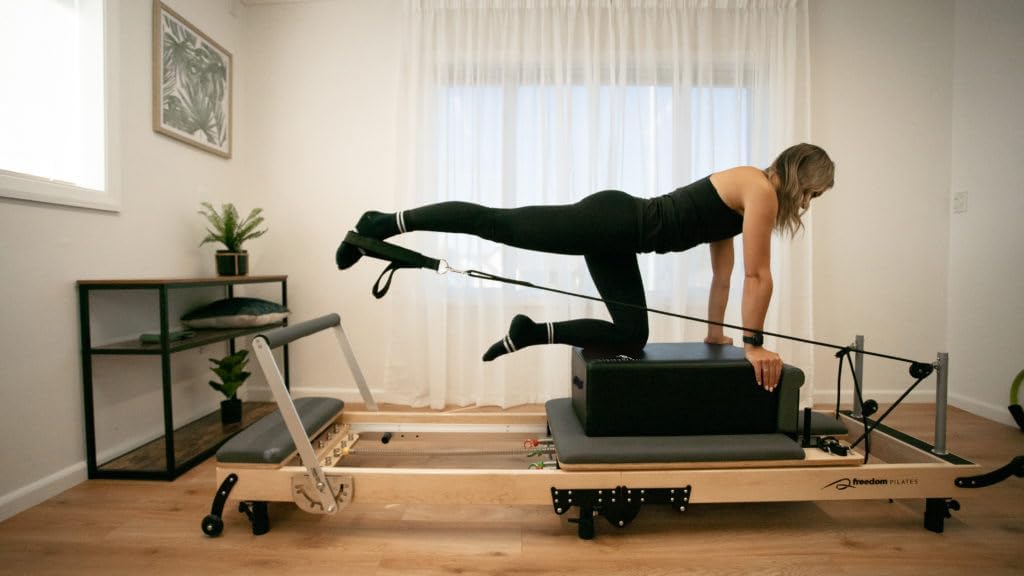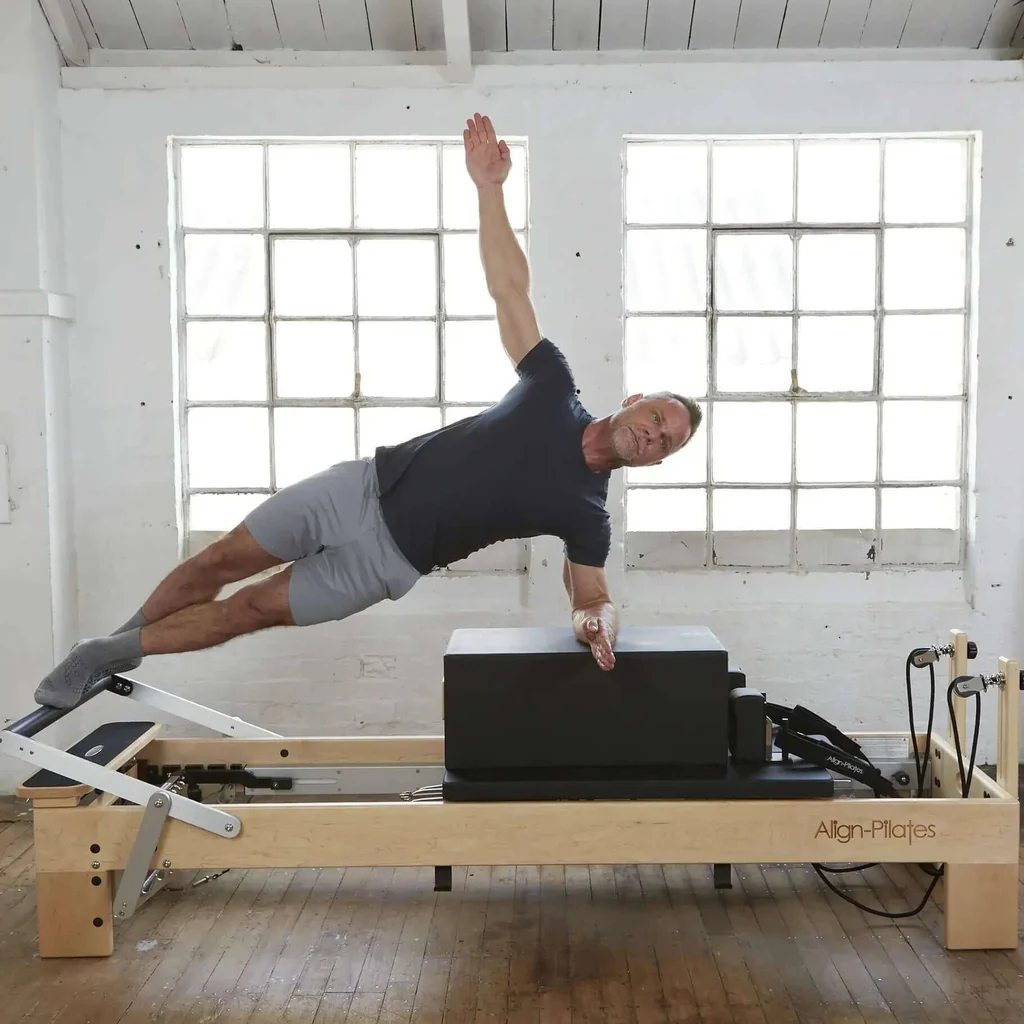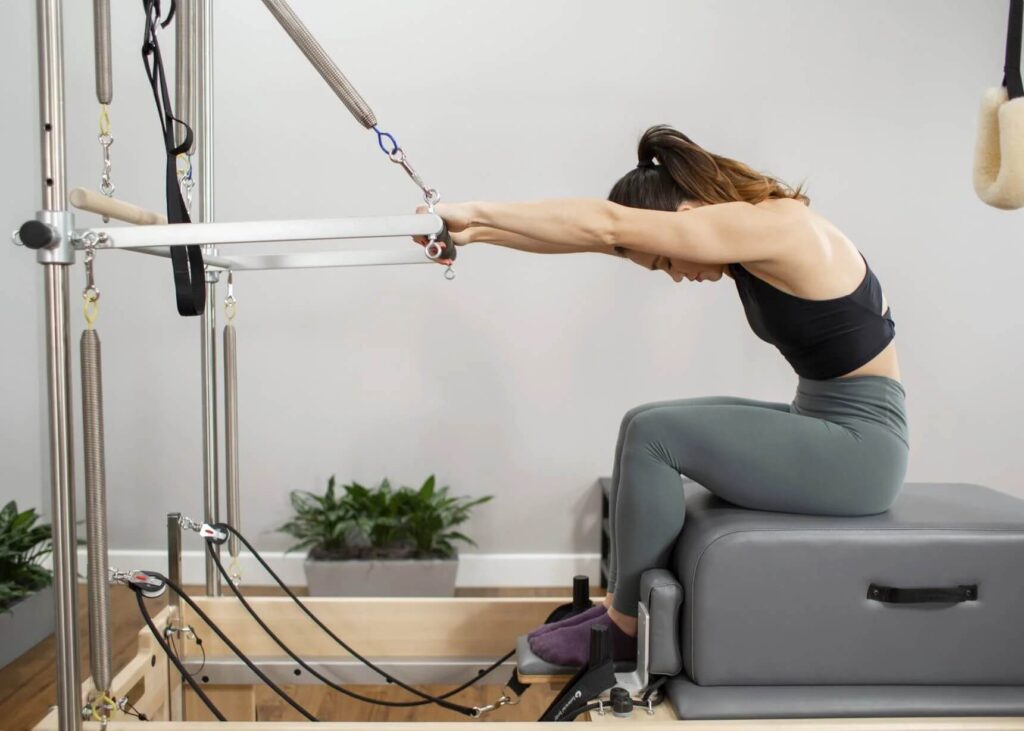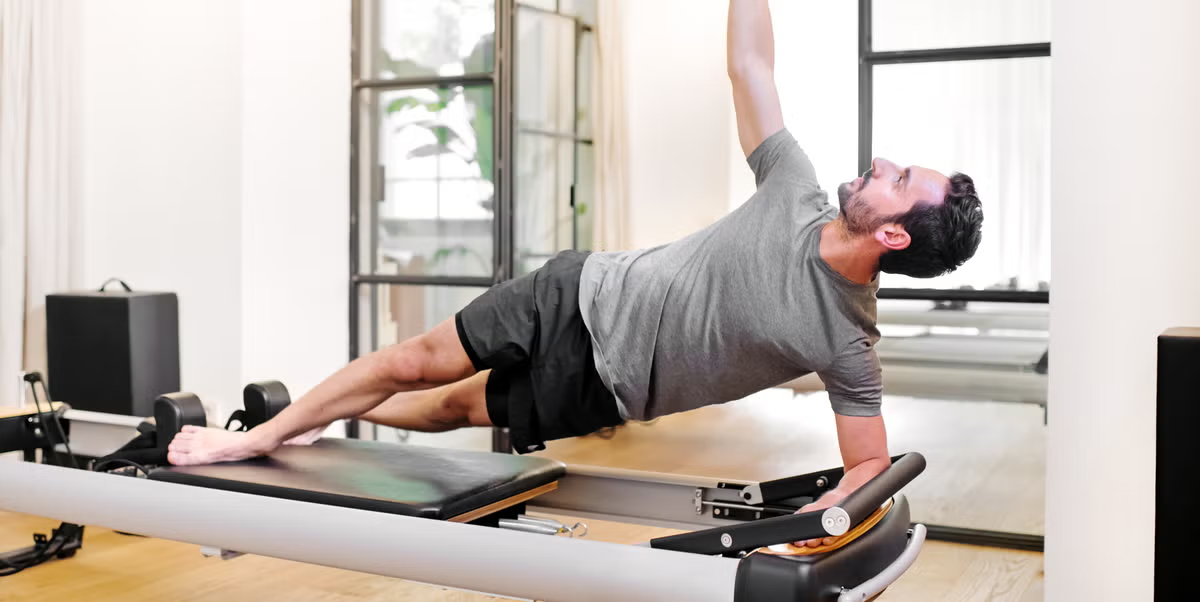Pilates has gained immense popularity over the years as a low-impact exercise method that focuses on core strength, flexibility, and overall body awareness. One of the most effective ways to enhance your Pilates practice is by incorporating a sitting box into your routine. This versatile piece of equipment allows practitioners to target multiple muscle groups simultaneously, making workouts more efficient and effective. In this article, we will explore how a sitting box Pilates routine can benefit your fitness journey and provide you with a comprehensive guide to get started.
Understanding the Sitting Box in Pilates
The sitting box, often referred to as a Pilates box or a reformer box, is a rectangular piece of equipment designed to elevate and support the body during various exercises. It can be used on its own or in conjunction with a reformer machine. The primary purpose of the sitting box is to enhance stability and provide a greater range of motion, allowing for deeper engagement of the muscles.
Benefits of Using a Sitting Box
Integrating a sitting box Pilates routine offers numerous benefits. Firstly, it helps in improving posture by encouraging proper alignment of the spine. Secondly, the box provides additional support, enabling practitioners to perform exercises that may be challenging on the mat alone. This support allows for a more focused workout, targeting specific muscle groups effectively.
Moreover, the sitting box can be adjusted to different heights, catering to various skill levels. This adaptability makes it an excellent tool for both beginners and advanced practitioners. By incorporating the sitting box, individuals can experience enhanced muscle engagement, increased flexibility, and improved overall strength.
In addition to its physical benefits, the sitting box also plays a role in enhancing mental focus during workouts. As practitioners engage with the box, they are encouraged to concentrate on their movements and breath, fostering a deeper mind-body connection. This heightened awareness not only aids in executing exercises with precision but also promotes a sense of calm and mindfulness, which can be particularly beneficial in today’s fast-paced world.
Key Muscle Groups Targeted
When using a sitting box in Pilates, multiple muscle groups can be targeted simultaneously. Key areas of focus include the core, glutes, hamstrings, and upper body muscles. The versatility of the box allows for a wide range of exercises that can engage these muscle groups effectively.
For instance, exercises such as the Box Roll Down and the Box Push-Up not only work the core but also engage the arms and legs, providing a full-body workout. This multi-target approach is particularly beneficial for those looking to maximise their time spent exercising. Furthermore, the sitting box can be utilised for stretching and rehabilitation exercises, making it a valuable asset for individuals recovering from injuries or those looking to improve their overall flexibility. The ability to modify exercises by adjusting the box height or adding resistance allows for a tailored experience that can evolve with the practitioner’s progress.
Getting Started with a Sitting Box Pilates Routine
Before diving into a sitting box Pilates routine, it is essential to ensure that you have the right equipment and a clear understanding of the exercises involved. Here’s a step-by-step guide to help you get started.
Choosing the Right Equipment
To begin, select a sitting box that is sturdy and well-constructed. Most Pilates studios will have boxes available, but if you are setting up a home gym, consider investing in a high-quality box that can withstand regular use. Additionally, ensure that you have a comfortable mat to provide cushioning during floor exercises.
It is also advisable to wear comfortable, form-fitting clothing that allows for a full range of motion. Avoid loose clothing that may get caught during exercises. Lastly, a water bottle nearby is essential to stay hydrated throughout your workout.
When selecting your sitting box, consider the height and width that best suits your body type and the exercises you plan to perform. A box that is too high can strain your joints, while one that is too low may not provide the necessary support. Many Pilates enthusiasts find that a box with adjustable height features offers versatility for various exercises, allowing for a more tailored experience. Additionally, if you have access to a reformer, pairing your box with it can enhance your workout, providing a broader range of movements and resistance options.
Warm-Up Exercises
Before engaging in a sitting box routine, warming up is crucial to prepare the body and prevent injuries. Start with gentle stretches focusing on the spine, hips, and shoulders. Simple movements such as neck rolls, shoulder shrugs, and seated forward bends can help increase blood flow and flexibility.
Once warmed up, consider incorporating some light core activation exercises, such as pelvic tilts or seated marches, to engage the muscles you will be using during your routine. These preparatory movements not only enhance your performance but also create a mind-body connection, which is a fundamental aspect of Pilates practice. Engaging your core before you start will help you maintain stability and control throughout your exercises, making your routine more effective and enjoyable.
Moreover, you might want to include some dynamic stretches, such as arm circles or leg swings, to further mobilise your joints. These movements can help in reducing stiffness and improving your overall range of motion, setting a solid foundation for the more intensive exercises to follow. Remember, the goal of warming up is not just to prepare your body but also to cultivate a focused mindset, allowing you to fully immerse yourself in the Pilates experience.
Sample Sitting Box Pilates Routine
Now that you are equipped and warmed up, it’s time to dive into a sample sitting box Pilates routine. This routine is designed to target multiple muscle groups effectively and can be adjusted based on your fitness level.

1. Box Roll Down
Begin by sitting on the edge of the box with your feet flat on the floor and your knees bent. Engage your core and slowly roll down onto your back, using your abdominal muscles to control the movement. Hold for a moment before rolling back up to the starting position. Repeat this exercise 8-10 times. Learn more about the power of a Pilates Reformer Box for advanced exercises.
The Box Roll Down primarily targets the core while also engaging the hip flexors and lower back muscles. This exercise helps improve spinal mobility and strengthens the abdominal region.
2. Box Push-Up
Position yourself in a push-up stance with your hands on the box and your feet on the floor. Lower your body towards the box while keeping your elbows close to your sides. Push back up to the starting position. Aim for 8-12 repetitions, depending on your strength level.
This exercise targets the chest, shoulders, and triceps while also engaging the core for stability. It’s an excellent way to build upper body strength while utilising the support of the box.
3. Seated Leg Lifts
Sit on the box with your legs extended in front of you. Lean back slightly, engaging your core, and lift one leg off the ground while keeping it straight. Lower it back down and repeat with the other leg. Perform 10-15 repetitions on each side.
Seated leg lifts are fantastic for targeting the hip flexors, quadriceps, and lower abdominal muscles. This exercise also helps improve balance and coordination.
Cool Down and Stretching
After completing your sitting box Pilates routine, it is essential to cool down and stretch the muscles you have worked. Cooling down helps to gradually lower your heart rate and prevent stiffness.
Stretching Exercises
Begin with seated forward bends, reaching towards your toes to stretch the hamstrings and lower back. Follow this with gentle spinal twists to release tension in the spine and improve flexibility. Lastly, consider incorporating shoulder stretches to alleviate any tightness in the upper body.
Hold each stretch for 15-30 seconds, breathing deeply to enhance relaxation. This cool-down phase is crucial for recovery and will leave you feeling rejuvenated after your workout.
Incorporating the Sitting Box into Your Routine
To fully reap the benefits of a sitting box Pilates routine, consistency is key. Aim to incorporate this routine into your weekly workout schedule at least two to three times. As you become more comfortable with the exercises, consider increasing the number of repetitions or adding variations to challenge yourself further.
Tracking Progress
Keeping track of your progress can be incredibly motivating. Consider maintaining a fitness journal where you document your workouts, noting the exercises performed, the number of repetitions, and how you felt during each session. This practice not only helps you stay accountable but also allows you to celebrate your achievements over time.
Additionally, consider taking progress photos or measuring your strength and flexibility improvements. These tangible results can serve as a powerful motivator to continue pushing yourself.
Joining a Class or Community
For those looking to enhance their Pilates experience, consider joining a class or finding a Pilates community. Working with a qualified instructor can provide invaluable guidance on form and technique, ensuring that you are performing exercises safely and effectively.
Moreover, being part of a community can foster a sense of camaraderie and support, making your fitness journey more enjoyable. Many studios offer group classes that incorporate the sitting box, providing an opportunity to learn from others and share experiences.

Conclusion
Incorporating a sitting box into your Pilates routine can significantly enhance your workout by targeting multiple muscle groups simultaneously. The benefits of improved posture, increased strength, and enhanced flexibility make it a valuable addition to any fitness regimen.
By following the guidelines and sample routine outlined in this article, individuals can effectively utilise the sitting box to achieve their fitness goals. Remember to warm up properly, cool down after your workout, and stay consistent to see the best results.
Whether you are a beginner or an experienced practitioner, the sitting box offers a versatile and effective way to elevate your Pilates practice. Embrace the challenge, and enjoy the journey towards a stronger, more balanced body.


